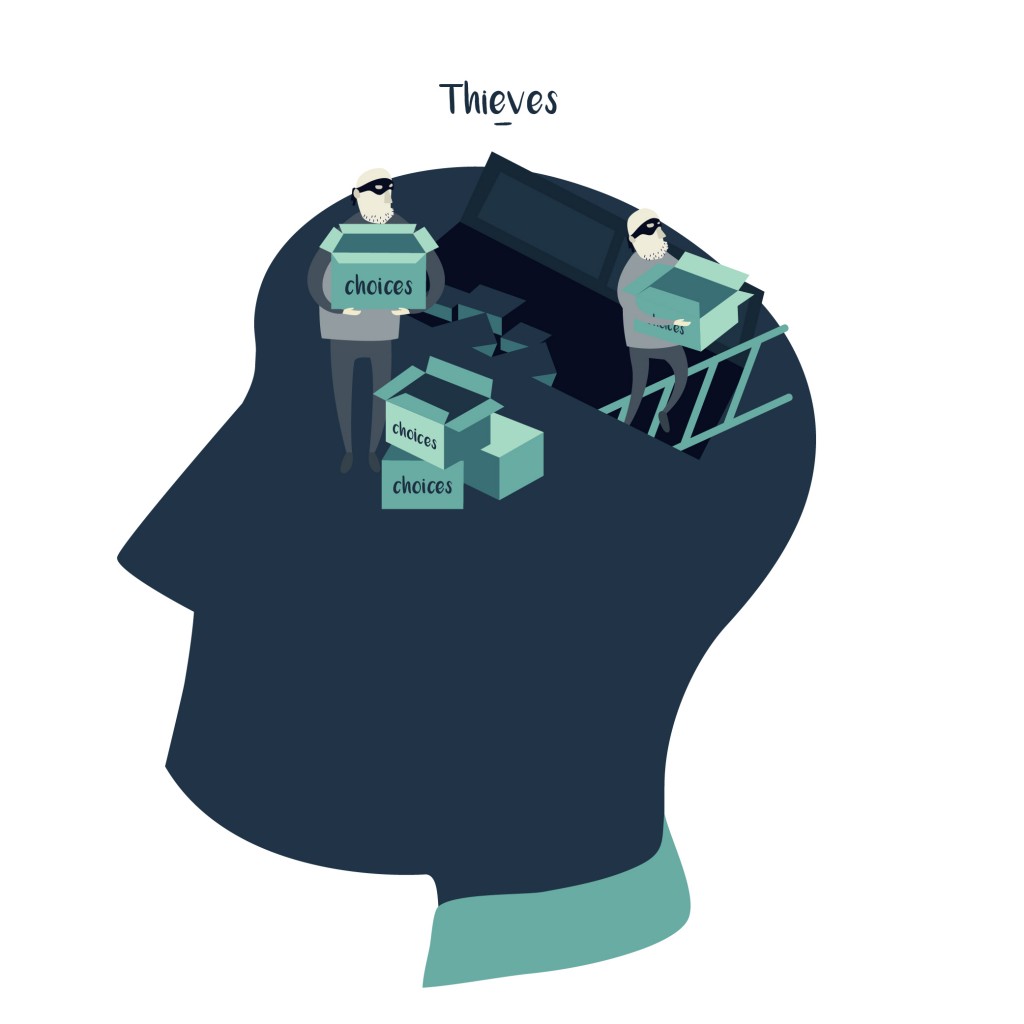1) The inability of an institution, or the people running that institution, from ceasing to do what they know to be harmful and destructive.
2) It is where a manager’s duty to a company or organization outweighs all other concerns, including his or her concerns about the viability of the planet to support the human beings and the other species that now reside on it. It is duty to an institution being stronger than anything outside of that institution, including the concerns for his or her own family.
3) It is the mixture, among those running an institution, of a) the knowledge by those running an institution that their actions and decisions cause harm to the living systems of the planet and b) the inability or unwillingness to halt that destruction.
The duty of a manager of a corporations is definite and unqualified: it is to serve the interests of the corporation—increasing profits, avoiding risks, perceiving threats, acting so that the company is unfettered in its growth and its plans to secure profits for its owners. Furthermore, institutions often defend themselves at all costs. A company has no investment in anything but itself and so sees no cost as too great to preserve itself and its source of financial support. In short, a manager is often a servant to an entity that is indifferent to what it destroys.
This pathology results in a dilemma for managers of those institutions. It is the dilemma of being torn between their duty to the institution and their feelings of obligation towards others and toward the planet’s living systems—as well as toward the lives of future generations. One response to this dilemma may be denial among the group of people running the institution or even a culture of silence surrounding these concerns. Another response to this ambivalence may to be to adopt destruction as a social norm by subsuming it into an ideology which gives a different meaning to the act and holds it as a virtue.
Choices
What Are Your Choices?
What can you do? Here are some choices that are available to you.
1) Share this definition with others.
2) Require corporations make public all internal and commissioned studies about the environmental impacts of their actions.
3) Subject managers of corporations who violate environmental regulations to criminal prosecution and change the law so they are not insulated from the consequences of their actions.
4) Make a company’s owners and shareholders financially liable for the actions of the managers they hire to run the company or institution.
5) Alter the legal framework of companies so that the legal and ethical responsibility to ecosystems and those outside of the company are equal or greater than the legal and ethical responsibility to their employer.
See also Risk Asymmetry.
